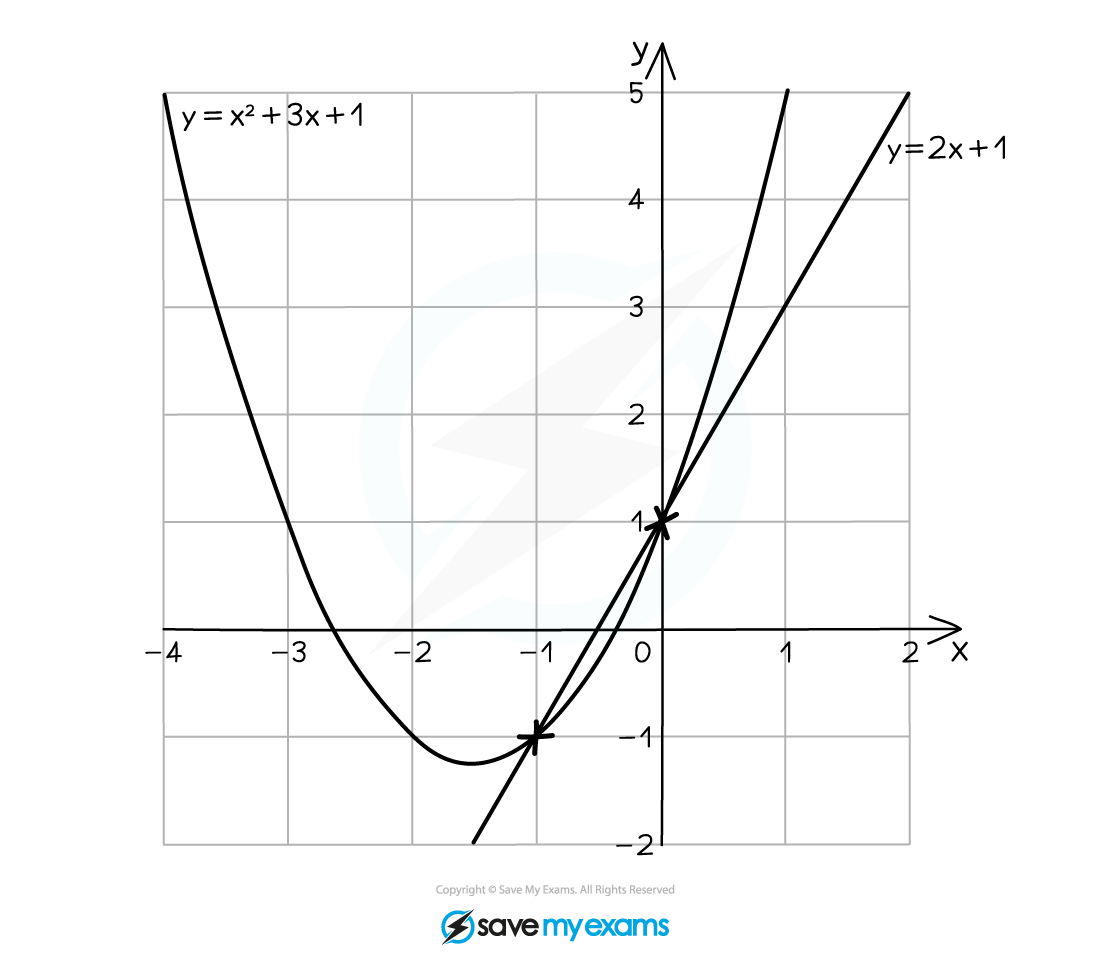Using Calculators to Solve Inequalities (Cambridge (CIE) IGCSE International Maths) : Revision Note
Using Calculators to Solve Inequalities
How do I solve inequalities using my graphic display calculator?
You can use a graphic display calculator to solve inequalities of the form
or
or
First, turn the inequality into an equation and solve
Read the revision note on Using Calculators to Solve Equations to see how
The solutions to the equation
are the x-coordinates of the points of intersection of the two graphs
and
Then look at the regions (areas) enclosed between the two graphs and decide which curve is the top curve and which is the bottom curve
e.g. The solution to
are the ranges of x-values for which
is the top curve and
is the bottom curve
The top curve is greater than the bottom curve
Examples of different regions, R, are shown below

For example, to solve
using a graphical method
First solve the "=" equation to get
and
Then plot on your calculator and look for any regions where the quadratic is above (greater than) the line (quadratic on top, line on bottom)
This happens to the left of
and to the right of
The solution is
or

Examiner Tips and Tricks
Remember to give your solutions as ranges of x values, using strict inequalities if the question uses strict inequalities!
Worked Example
Use a graphical method to solve the inequality , giving your answers correct to 1 decimal place and showing a sketch of the graph.
Start a new graph on your calculator and enter to generate the graph
Add on the second graph of
Select the option to "analyze" the graph (this may be labelled as G-Solv)
Choose the option "intersections" to find the coordinates of the 3 points of intersection
The solutions to the equation are the x-coordinates of the points of intersection

The solutions to the equation are
,
or
to 1 d.p.
The inequality in the question is "cubic graph straight line graph"
Look at regions where the cubic is the bottom curve and the line is above
left of x = -2.2 and between x = -0.6 and x = 0.8
The solutions are the ranges of x-values over which these regions lie
Write your final answer using non-strict inequalities (to match the question)
or
to 1 d.p.

You've read 0 of your 5 free revision notes this week
Unlock more, it's free!
Did this page help you?

